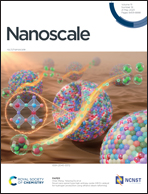Wet-chemistry synthesis of two-dimensional Pt- and Pd-based intermetallic electrocatalysts for fuel cells
Abstract
Two-dimensional (2D) noble-metal-based nanomaterials have attracted tremendous attention and have widespread promising applications as a result of their unique physical, chemical, and electronic properties. Especially, 2D Pt- and Pd-based intermetallic nanoplates (IMNPs) and nanosheets (IMNSs) are widely studied for fuel cell (FC)-related reactions, including the cathodic oxygen reduction reaction (ORR) and anodic formic acid, methanol and ethanol oxidation reactions (FAOR, MOR and EOR). Wet-chemistry synthesis is a powerful strategy to prepare metallic nanocrystals with well-controlled dispersity, size, and composition. In this review, a fundamental understanding of the FC-related reactions is firstly elaborated. Subsequently, the current wet-chemistry synthesis pathways for 2D Pt- and Pd-based IMNPs and IMNSs are briefly summarized, as well as their electrocatalytic applications including in the ORR, FAOR, MOR, and EOR. Finally, we provide an overview of the opportunities and current challenges and give our perspectives on the development of high-performance 2D Pt- and Pd-based intermetallic electrocatalysts towards FCs. We hope this review offers timely information on the synthesis of 2D Pt- and Pd-based IMNPs and IMNSs and provides guidance for the efficient synthesis and application of them.

- This article is part of the themed collections: Celebrating 25 years of the Key Laboratory for Special Functional Materials at Henan University and Recent Review Articles


 Please wait while we load your content...
Please wait while we load your content...